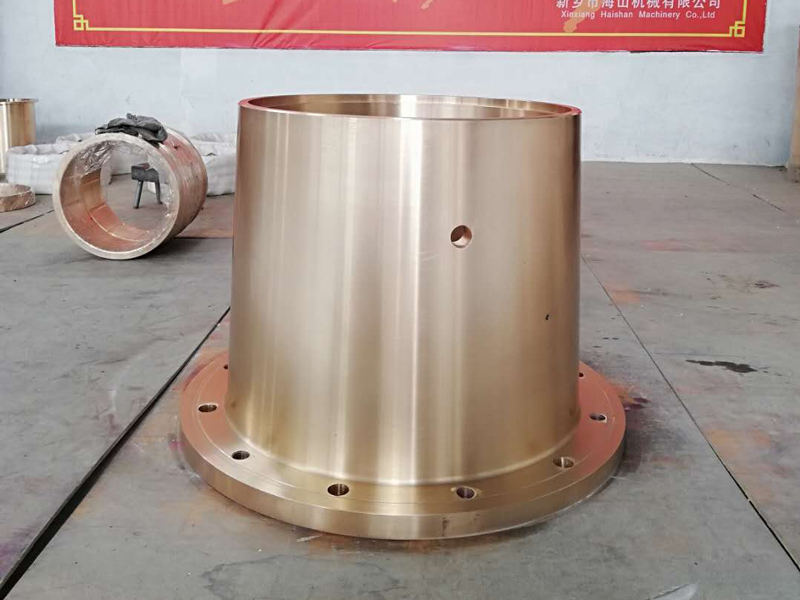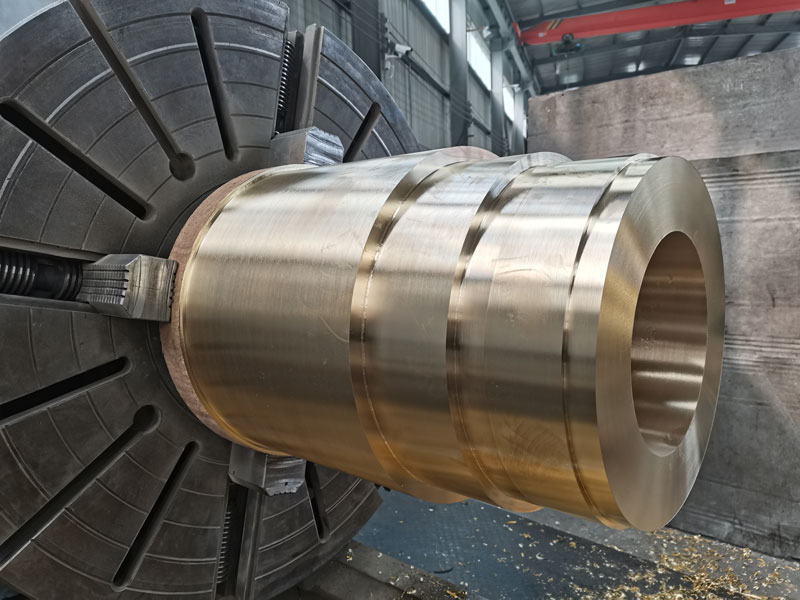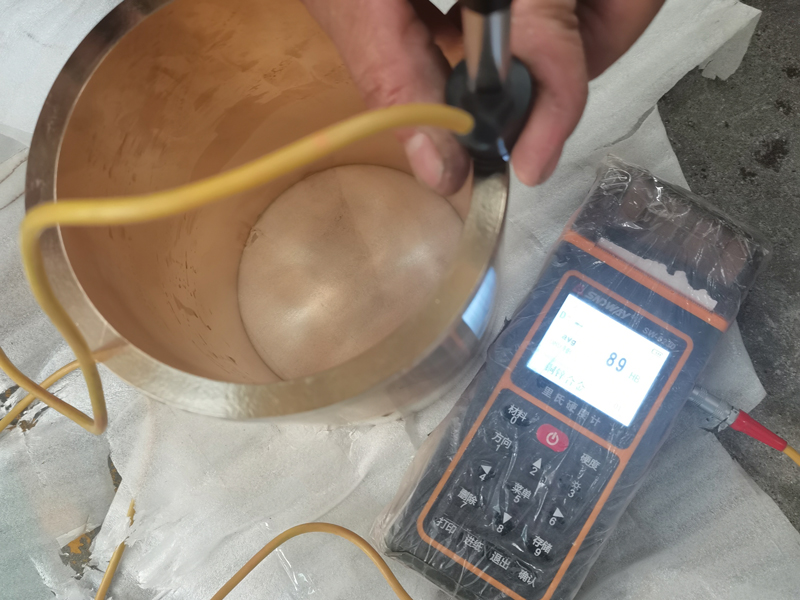The flanging deformation of brass casing materials is relatively complex. During the expansion process, the material in the deformation zone is mainly affected by tangential tensile stress, causing elongation deformation in the tangential direction. After the expansion is completed, its stress state and deformation The characteristics are similar to those of inner hole flanging. The deformation zone is mainly tangential drawing deformation, and its ultimate deformation degree is mainly limited by edge cracking.
Considering that the production batch of parts is not large and the above-mentioned processing steps are many, which affects the improvement of economic benefits, and also noticed that there are 30mm×1.5mm brass tubes on the market, it is considered to use copper tubes to complete the processing of parts by directly flanging them. .
The part has a simple shape and low dimensional accuracy requirements, which is conducive to forming. According to the structure of the part, usually the most economical and intuitive process plan will consider using the flat blank to directly form the part through flanging the inner hole. To this end, it is first necessary to determine the maximum height of the part that can be achieved with one flanging.
Since the maximum flanging height of the part is much smaller than the height of the part (28mm), it is impossible to make a qualified part using the direct flanging method. To form the part, you must first draw it deeply. After calculating the diameter of the blank and judging the number of times of drawing of the flange-drawn part, it can be determined that the part adopts the process plan of drawing. It must be drawn twice, and then the bottom of the cylinder can be cut off before processing can be completed.
Hardness Testing:
Professional hardness tests all use Brinell hardness. Generally speaking, the smaller the Brinell hardness value, the softer the material, and the larger the indentation diameter; conversely, the larger the Brinell hardness value, the harder the material, and the indentation diameter will be larger. The smaller the diameter. The advantages of Brinell hardness measurement are that it has high measurement accuracy, a large indentation area, can reflect the average hardness of the material in a wide range, the measured hardness value is also more accurate, and the data has strong repeatability. If you still have any questions, please feel free to call us. Xinxiang Haishan Machinery is specialized in solving all kinds of copper casting questions for you.


 Russian
Russian  Albanian
Albanian  Arabic
Arabic  Amharic
Amharic  Azerbaijani
Azerbaijani  Irish
Irish  Estonian
Estonian  Odia (Oriya)
Odia (Oriya)  Basque
Basque  Belarusian
Belarusian  Bulgarian
Bulgarian  Icelandic
Icelandic  Polish
Polish  Bosnian
Bosnian  Persian
Persian  Afrikaans
Afrikaans  Tatar
Tatar  Danish
Danish  German
German  French
French  Filipino
Filipino  Finnish
Finnish  Frisian
Frisian  Khmer
Khmer  Georgian
Georgian  Gujarati
Gujarati  Kazakh
Kazakh  Haitian Creole
Haitian Creole  Korean
Korean  Hausa
Hausa  Dutch
Dutch  Kyrgyz
Kyrgyz  Galician
Galician  Catalan
Catalan  Czech
Czech  Kannada
Kannada  Corsican
Corsican  Croatian
Croatian  Kurdish (Kurmanji)
Kurdish (Kurmanji)  Latin
Latin  Latvian
Latvian  Lao
Lao  Lithuanian
Lithuanian  Luxembourgish
Luxembourgish  Kinyarwanda
Kinyarwanda  Romanian
Romanian  Malagasy
Malagasy  Maltese
Maltese  Marathi
Marathi  Malayalam
Malayalam  Malay
Malay  Macedonian
Macedonian  Maori
Maori  Mongolian
Mongolian  Bengali
Bengali  Myanmar (Burmese)
Myanmar (Burmese)  Hmong
Hmong  Xhosa
Xhosa  Zulu
Zulu  Nepali
Nepali  Norwegian
Norwegian  Punjabi
Punjabi  Portuguese
Portuguese  Pashto
Pashto  Chichewa
Chichewa  Japanese
Japanese  Swedish
Swedish  Samoan
Samoan  Serbian
Serbian  Sesotho
Sesotho  Sinhala
Sinhala  Esperanto
Esperanto  Slovak
Slovak  Slovenian
Slovenian  Swahili
Swahili  Scots Gaelic
Scots Gaelic  Cebuano
Cebuano  Somali
Somali  Tajik
Tajik  Telugu
Telugu  Tamil
Tamil  Thai
Thai  Turkish
Turkish  Turkmen
Turkmen  Welsh
Welsh  Uyghur
Uyghur  Urdu
Urdu  Ukrainian
Ukrainian  Uzbek
Uzbek  Spanish
Spanish  Hebrew
Hebrew  Greek
Greek  Hawaiian
Hawaiian  Sindhi
Sindhi  Hungarian
Hungarian  Shona
Shona  Armenian
Armenian  Igbo
Igbo  Italian
Italian  Yiddish
Yiddish  Hindi
Hindi  Sundanese
Sundanese  Indonesian
Indonesian  Javanese
Javanese  Yoruba
Yoruba  Vietnamese
Vietnamese  Hebrew
Hebrew




